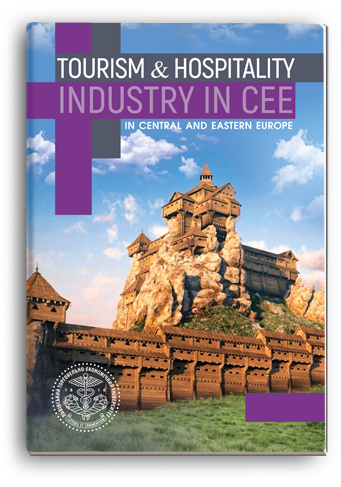Abstract
Sustainable tourism development, its rules and management practices can be applied to all forms of tourism, including mass tourism and different types of it in all directions. Important achievements have been made in this field in our country. The principles of sustainability in tourism development should take into account environmental, economic and socio-cultural aspects, and an appropriate balance should be created between these three factors to ensure long-term sustainability. Economic, environmental and social goals in the policy implemented by the state will play the key role to the success of tourism activities. The principles of sustainability are more relevant to the ecological, economic and socio-cultural environment in the tourism field. The balance between these three important features must be well established to provide long-term sustainability. In Astara, one of the most prosperous regions of Azerbaijan, one part of the region is covered by Talish mountains, and the other part is lowland. Tourists are attracted by the Talish Mountains, local residents' lifestyle, culture, traditions, clothing, as well as the beautiful scenery of this region. More than 400 historical monuments have been preserved in the region. Most of them are in mountain villages. In Kapichi village of the region, there are a caravanserai from the 7th century, a necropolis from the 3rd-1st centuries B.C., the debris of an old castle, a tomb, and statues from the bronze and stone ages. Coins and stone tools found in the region are stored in the City Museum of Local History. Lankaran has all conditions for a successful tourism business. Tourists are also attracted by Caspian Sea and its beach areas. Lankaran is a coastal recreation area on the Caspian coastco whose healing beaches covered by black sand. There are "Istisu" sanatoriums and magical hot springs in Haftoni village of Lankaran. It is very interesting for tourists who are interested in ecotourism and sightseeing. The beaches themselves are not ine the open areas and surrounded by trees provided pleasant shade on hot days.
References
Bilalov В.Ə., Gülalıyev Ç.G. (2015) Turizmin əsasları: dərslik / müəllif kollektivi; dosent B.Ə.Bilalov və dosent Ç.G.Gülalıyevin redaktəsi ilə. Bakı : “QHT Nəşriyyatı”. 496 s.
Ələkbərov U. (2017) Davamlı inkişaf və ekoloji sivlizasiyanın idarə edilməsinin əsasları. Ali məktəblər üçün dərslik. Bakı: "Təhsil". 176 s.
Hüseynov İ., Əfəndiyeva N. (2007) Turizmin əsasları. Dərslik. Bakı : «Mars-Print» nəşriyyat-poliqrafiya müəssisəsi. 442 səh.
Hüseynov S. (2009) Davamlı İnsan İnkişafı. “Azərbaycan Dövlət Aqrar Universiteti”nəşriyyatı Ali məktəblər üçün dərslik. Bakı. 494 s.
Köçərli Y., Köçərli L. (2019) Azərbaycanda turizmin dayanıqlı inkişafının sosial-iqtisadi rolu və qiymətləndirilməsi turizm və rekreasiya XXI əsrdə: problemlər və perspektivlər. Bakı. 3-4 May 2019. 292 səh.
Mükərrəmoğlu M. (2018) Turizmin davamlı inkişaf ili. “Xalq qəzeti” 2018, 7 yanvar, s.4.
Rəcəbli H. (2022) Sosial sahələrin idarə edilməsi. Bakı. 395 s.
Clark, William; Harley, Alicia (2020). "Sustainability Science: Toward a Synthesis". Annual Review of Environment and Resources. 45 (1). 331–86.
Geographical indicators of sustainable development and assessment of the impact on the environment. IOP Conference Series: Earth and Environmental Science. Available at: https://iopscience.iop.org/
Jacobus A. Du Pisani P. (2006) Sustainable development historical roots of the concept. June, 2006. Environmental Sciences 3(2). Р. 83–96
Randall, A. (1987). Resource economics (Second ed.). New York, USA : John Wiley & Sons.
Brundtland report. Report of the World Commission on Environment and Development: not /by the Secretary-General.UN. Secretary-General; World Commission on Environment and Development. New York : UN, 4 Aug. 1987. 374 p.
Fletcher J., Gilbert D. (1993) Tourism. Principles & Practice. G.B., McGraw-Hill Companies. 466 p.
Freyer W. (1995) Tourismus. Einfurung in die Fremdenverkehrekonomie. Munchen. 422 p.
Krippendorf J. (1986) The Holiday Makers. Understanding the impact of ecisure & travel. Dissenhofen. 386 p
Muhamad, Anugrah G. P. Implementation Of Sustainable Tourism Destination Development Achievements. Asia Tourism Forum 2016 – The 12th Biennial Conference of Hospitality and Tourism Industry in Asia (ATF-16) 2016. The authors – Published by Atlantis Press. 604 p. (1 Vol).
Opaschowski H. (1991) Der Fremdenverkehr in der oekonomischen Theorie. Opladen. 340 p.
UNEP&WTO. (2005) Making Tourism More Sustainable: A Guide for Policy Makers. Paris, United Nations Environment Programme Division of Technology, Industry and Economics, 222 p.
Azərbaycan Respublikasının Dövlət Statistika Komitəsinin məlumatı. Available at: https://stat.gov.az/
Archer В. (1996) Economic Impact Analysis. Annals of Tourism Research. L.: IBD Ltd. 560 p.


